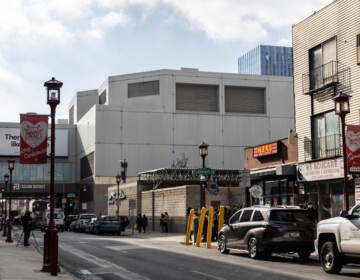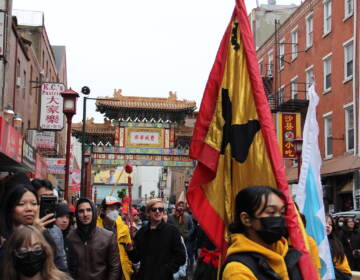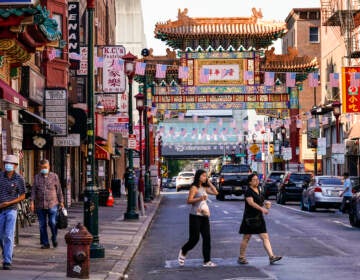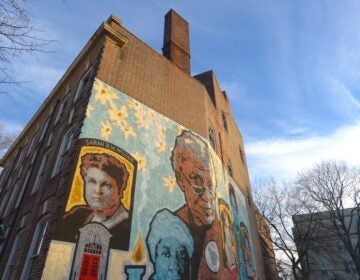‘We deserve much better’: Critics oppose Philly’s plan for evaluating Sixers arena proposal
Experts supporting the Save Chinatown Coalition say the city is doing a disservice to its residents.
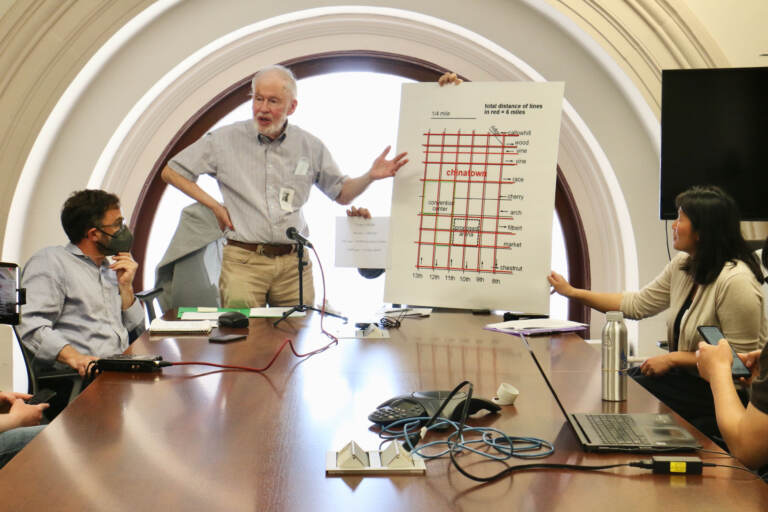
Edward Gruberg, Professor Emeritus, Temple University, presents his projections for parking problems in Chinatown if the Philadelphia 76ers arena is built there. (Emma Lee/WHYY)
Opponents of the Sixers’ proposal to build a new arena near Chinatown are pushing back on Philadelphia’s game plan for evaluating the project’s impact.
Inside a City Hall conference room on Monday, a panel of volunteer experts told reporters the city’s three-pronged plan is neither independent nor comprehensive, calling it a “rush job” primed to benefit 76 Devcorp, the team behind the $1.3 billion proposal.
“This is not a very serious set of impact studies that they are requesting,” said Domenic Vitiello, an associate professor of city and regional planning at the University of Pennsylvania.

In mid-April, Mayor Jim Kenney asked the Philadelphia Industrial Development Corporation to fast-track a trio of requests for proposals — one for a community impact analysis, one for an economic analysis, and one for design consulting services.
The experts, part of a research and planning committee convened by the Save Chinatown Coalition, say the RFPs are perfunctory to the point that they question their purpose. Based on the details of the requests, they said the city’s goal doesn’t appear to be determining whether the blocklong arena — dubbed 76 Place — should be built at 10th and Market streets.
“The RFPs instead seem to be geared towards figuring out what should be negotiated in a community benefits agreement or a CBA, as if the building of the arena was a foregone conclusion,” said community planner Jenny Chen.
Chen said having PIDC facilitate the process doesn’t help change those optics. To her, the nonprofit is only accountable to real estate developers and businesses, not residents of Philadelphia who may be impacted by the arena, raising concerns about whether the process can be impartial.
The details of the RFPs provide supporting evidence, said Chen.
“We see a lot of questions that are framed in a way that assumes the harms of the arena may cause can be mitigated. Like how could the Sixers arena ensure the cultural vitality of local businesses is preserved? They also ask, what would the Sixers need to prioritize in the construction process to maximize benefits and mitigate negative impacts,” said Chen, adding the city should be leading the process instead.
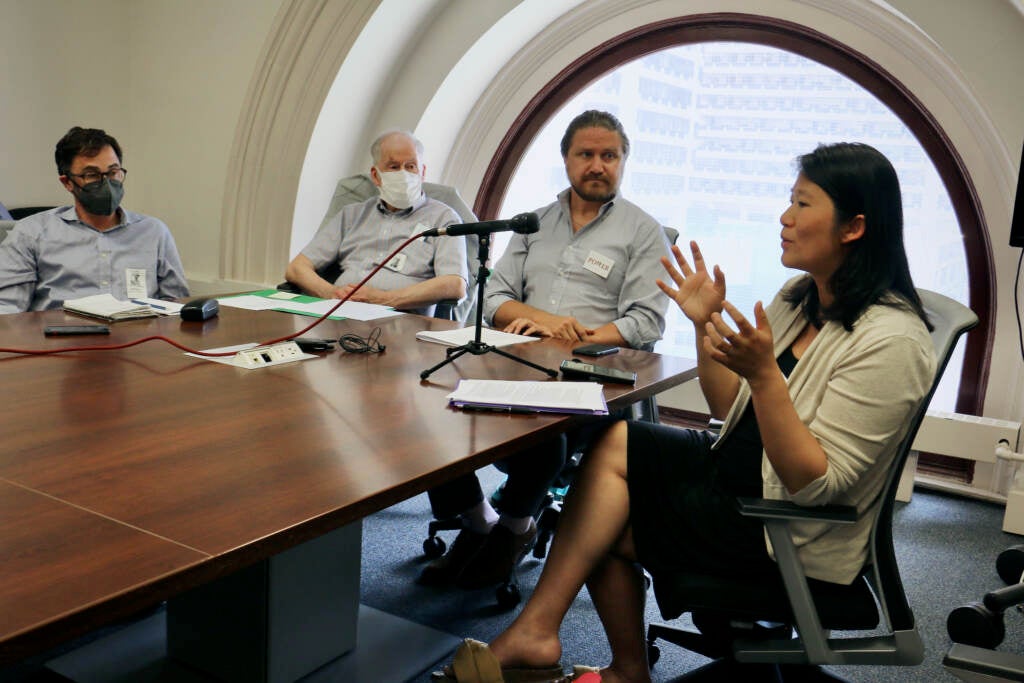
In a statement, spokesperson Kevin Lessard said PIDC is “helping the City perform its due diligence regarding the impact of the project to the city as a whole and the surrounding communities in particular.”
“As part of our strategic framework, PIDC believes the best projects are completed with the engagement and support of the surrounding communities and looks forward to supporting the City to best understand the project’s impacts before proceeding,” said Lessard.
The deadline for responding to the RFPs is May 12.
Originally, selected firms would have 60 days to complete their work. Lessard said that timeline was scrapped after PIDC received feedback that more time would be needed for “meaningful community engagement.” The RFPs now request applicants to propose their own timelines for completing their analyses.
A city spokesperson said the scopes of the RFPs incorporated feedback from opponents of the arena proposal, including the Save Chinatown Coalition, the Philadelphia Chinatown Development Corporation, and the Mayor’s Commission on Asian American Affairs.
“As neither Administration officials nor representatives from PIDC were invited to this event, we can’t speak directly to the issues raised,” said Joy Huertas in an email.
Monday’s news conference also addressed traffic concerns.
Since the Sixers announced the team’s plans for a new arena, critics have raised concerns about traffic when there are home games and other events such as concerts. They worry the area in and around Chinatown will become so congested on those days that people will look to avoid the neighborhood altogether. The argument is part of a broader fear that the arena project would destroy Chinatown.
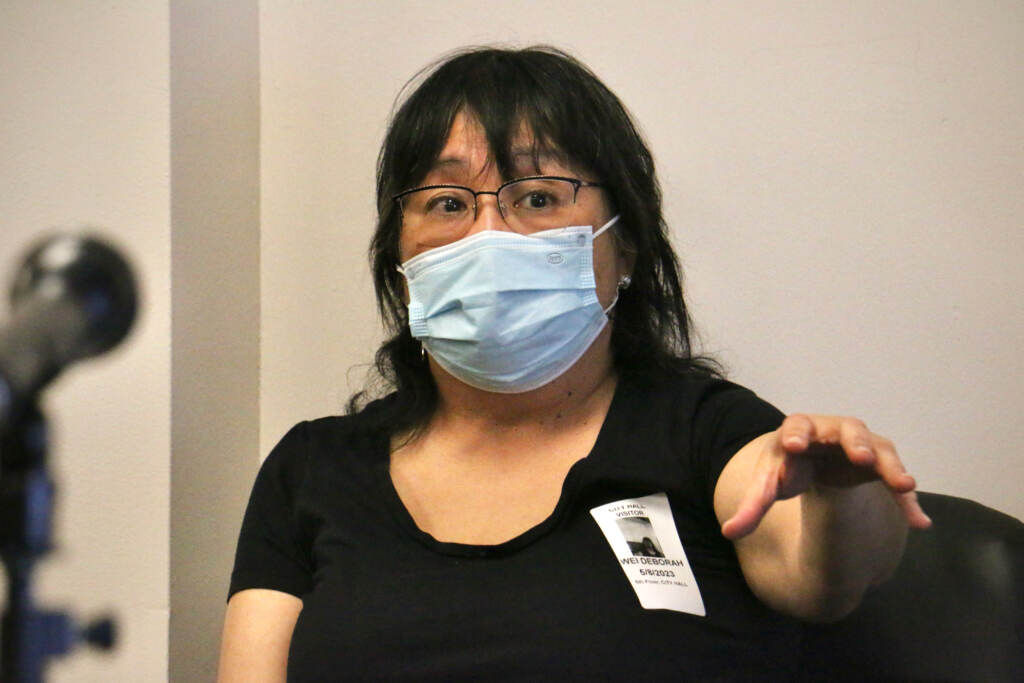
The Sixers’ plan does not call for any additional parking. The team expects most fans to use public transportation, be dropped off by an Uber or taxi, or walk to the arena. Drivers will take advantage of existing parking garages, according to the 76 Place website.
Edward Gruberg, a Temple biology professor, said he examined a traffic study the team commissioned, a copy of which a supporter obtained through a public records request. The study was reviewed by WHYY News.
Gruberg, who also worked closely on traffic issues when the Phillies proposed building on Vine Street in Chinatown, said the Sixers’ plan underestimates the number of people who will drive to the arena. He said the study also doesn’t account for random occurrences like street work, double parking, or medical emergencies, which would further add to the congestion when the arena is active.
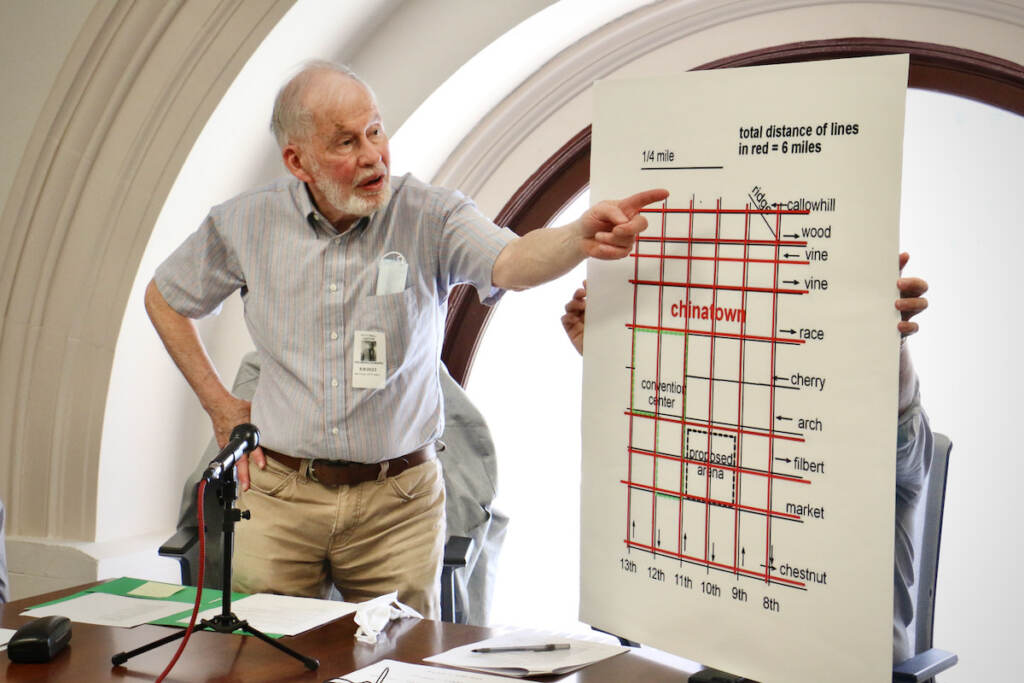
On the driving issue, Gruberg said: “These games get out at 10 or 11 at night and the people with families will be very reluctant to solely take public transportation at that time of night. So it’s going to be very hard to convince people who take their cars to games to suddenly take public transportation.”
“Even with their numbers…it’s not gonna work,” he added.
Between 10 and 15% of fans use public transportation to get to the Wells Fargo Center in South Philadelphia, said an arena spokesperson.
A spokesperson for 76 Devcorp declined to comment.
The Sixers hope to have a new arena by 2031, when the Sixers lease expires at the Wells Fargo Center. The project still needs zoning to move forward with demolition and construction. The team is also working on executing a community benefits agreement that could be worth up to $50 million.
Team officials have said an arena would revitalize Market East, an area of the city that has struggled to thrive despite millions in investment.

Subscribe to PlanPhilly
WHYY is your source for fact-based, in-depth journalism and information. As a nonprofit organization, we rely on financial support from readers like you. Please give today.




